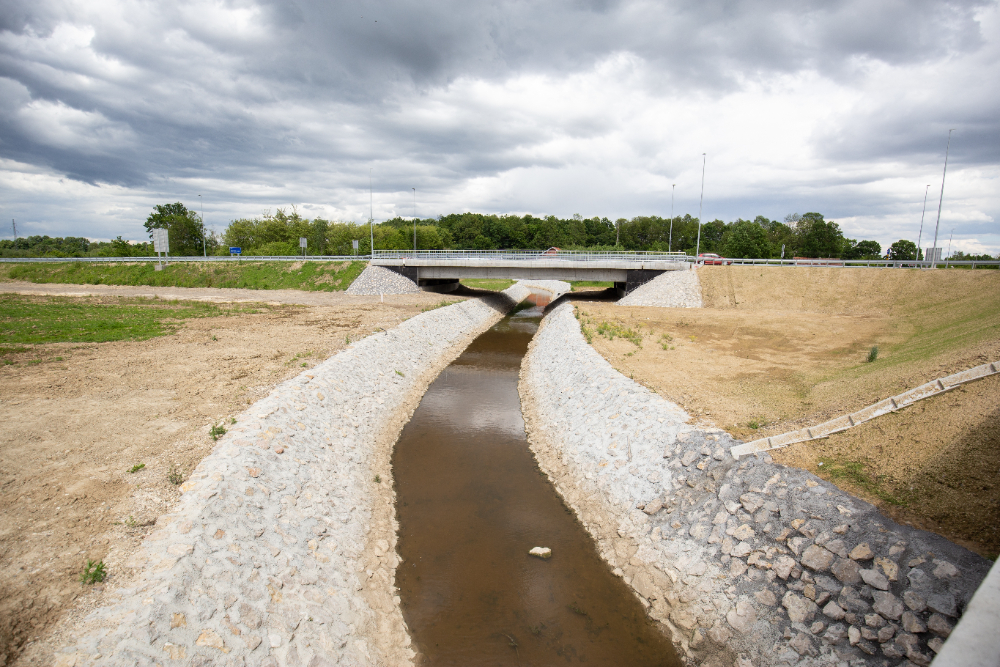Maintaining a healthy and beautiful yard in Houston often comes with its challenges. The city’s frequent heavy rainfall and clay-rich soils can lead to water management problems that damage your plants and property. Poor landscape drainage in houston is more than inconvenient—it can result in standing water, soil erosion, and even costly foundation issues.
The good news is that careful observation can often identify drainage issues early. Recognizing these signs in time allows you to address them before they escalate. This blog will outline the key indicators of poor drainage in Houston landscapes and explain why it’s essential to resolve these problems promptly.
Table of Contents
How to Identify Landscape Drainage Issues in Houston
Signs You Need Landscape Drainage
Bottom Line!
Signs You Need Landscape Drainage
Here, we will explain the most common signs that your yard may need professional drainage solutions, including practical details on how to spot and address each issue.
- Water Pooling After Rain
Standing water in your yard after a rainstorm is one of the most apparent signs of a drainage issue. In Houston, where heavy rains are common, pooling water often occurs in low-lying areas or spots with compacted clay soil that struggles to absorb moisture.
This stagnant water makes your yard unusable and creates an ideal breeding ground for mosquitoes. Over time, it can suffocate grass and other plants, leading to bare patches or dying vegetation. Addressing this issue with solutions like French drains or grading can help redirect water to prevent future pooling.
- Soggy or Marshy Areas in the Lawn
Do certain parts of your yard stay wet long after the rain has stopped? Persistent sogginess in the soil indicates that water needs to be draining correctly. Clay soil, abundant in Houston, holds water longer than sandy or loamy soils, compounding the issue.
A constantly soggy lawn makes mowing difficult and promotes fungal diseases, mold, and grass decline. Installing surface drains or adjusting the slope of your yard may be necessary to improve drainage.
- Soil Erosion During Heavy Rainfall
Heavy rains can wash away topsoil, especially in sloped areas of your yard. Signs of soil erosion include exposed tree roots, bare patches of ground, and displaced mulch in flower beds.
This can result in poor plant growth as the nutrient-rich topsoil is removed, leaving behind hard-packed, less fertile ground. Over time, erosion can also affect nearby structures like patios or retaining walls. Solutions like dry creek beds or retaining walls can manage water flow and prevent further soil loss.
- Water Pooling Near the Home’s Foundation
Pooling water around your home’s foundation is a critical problem that requires immediate attention. Poor drainage near the foundation can seep into basements, cause cracks, or weaken the structure over time.
This issue is often caused by improperly placed downspouts or poor grading around the house. Extending your downspouts and installing a perimeter drainage system can help redirect water safely away from your home.
- Foul Odors in the Yard
If certain parts of your yard have a persistent unpleasant smell, poor drainage might be the culprit. Standing water, especially in areas with organic debris, leads to rotting vegetation and stagnant water odors.
These foul smells can also attract pests, creating an unhealthy environment for your family and pets. Installing a drainage system can eliminate these odors by ensuring water doesn’t linger in one spot for long periods.
- Frequent Puddles on Hardscapes
Drainage problems aren’t limited to your lawn—they can also affect patios, driveways, and walkways. If you notice puddles forming on these surfaces after rain, it may signal improper grading or inadequate surface drains.
Over time, standing water can erode materials like concrete or pavers, leading to costly repairs. Catch basins and channel drains can efficiently collect and redirect water from these areas, preventing damage and maintaining usability.
- Mildew or Mold Growth in Shaded Areas
Houston’s high humidity and standing water can create perfect conditions for mildew and mold to thrive, particularly in shaded parts of your yard. Mold growth on fences, decks, or other outdoor structures clearly indicates excess moisture.
These fungi not only harm the appearance of your outdoor spaces but also pose health risks. Solving drainage issues in these areas can help control moisture levels and prevent the spread of mold and mildew.
- Declining Plant Health in Specific Areas
Have you noticed some parts of your yard struggle to support healthy plants? Waterlogged soil can suffocate plant roots, cutting off their access to oxygen and nutrients. Symptoms include yellowing leaves, stunted growth, and even plant death.
This is a common issue in Houston’s clay-heavy soils, which retain water for long periods. Proper grading or adding a French drain can significantly improve the health of your plants by keeping their roots dry and healthy.
Bottom Line!
Landscape drainage issues can impact your yard’s health, safety, and usability. Whether it’s pooling water, soggy soil, or structural concerns, addressing these problems early can prevent more extensive damage. Identifying the signs of poor drainage, such as erosion or declining plant health, is the first step toward protecting your property.
Houston Landscape Pros specializes in designing and installing effective drainage solutions tailored to Houston’s unique conditions. They provide expert solutions that keep your landscape healthy and functional, from redirecting water away from your foundation to improving soil conditions. Rresolve your drainage challenges and create a yard you’ll enjoy for years.
